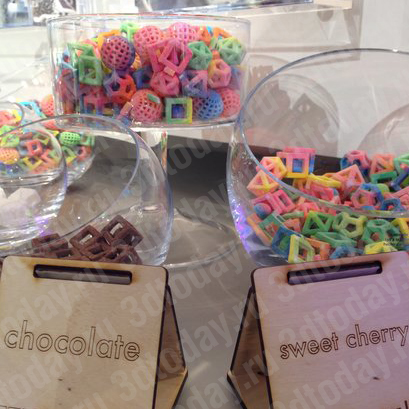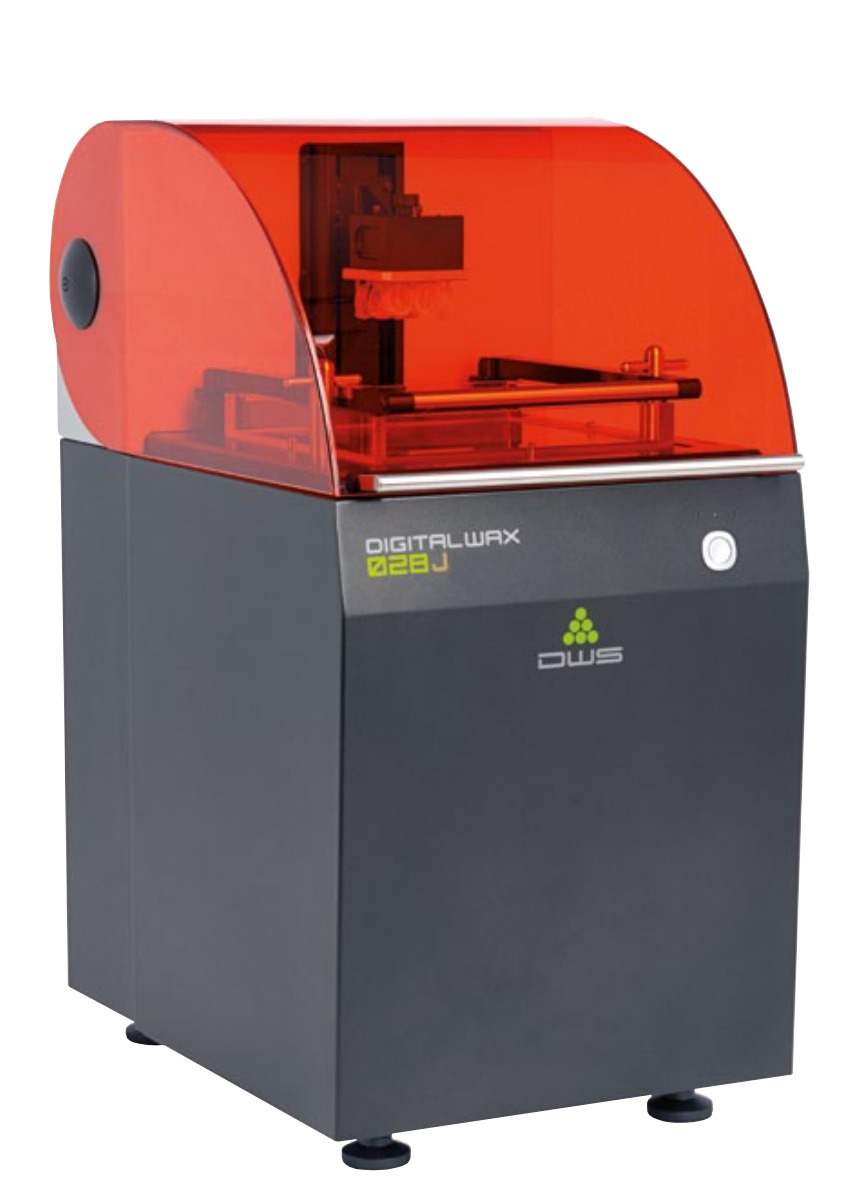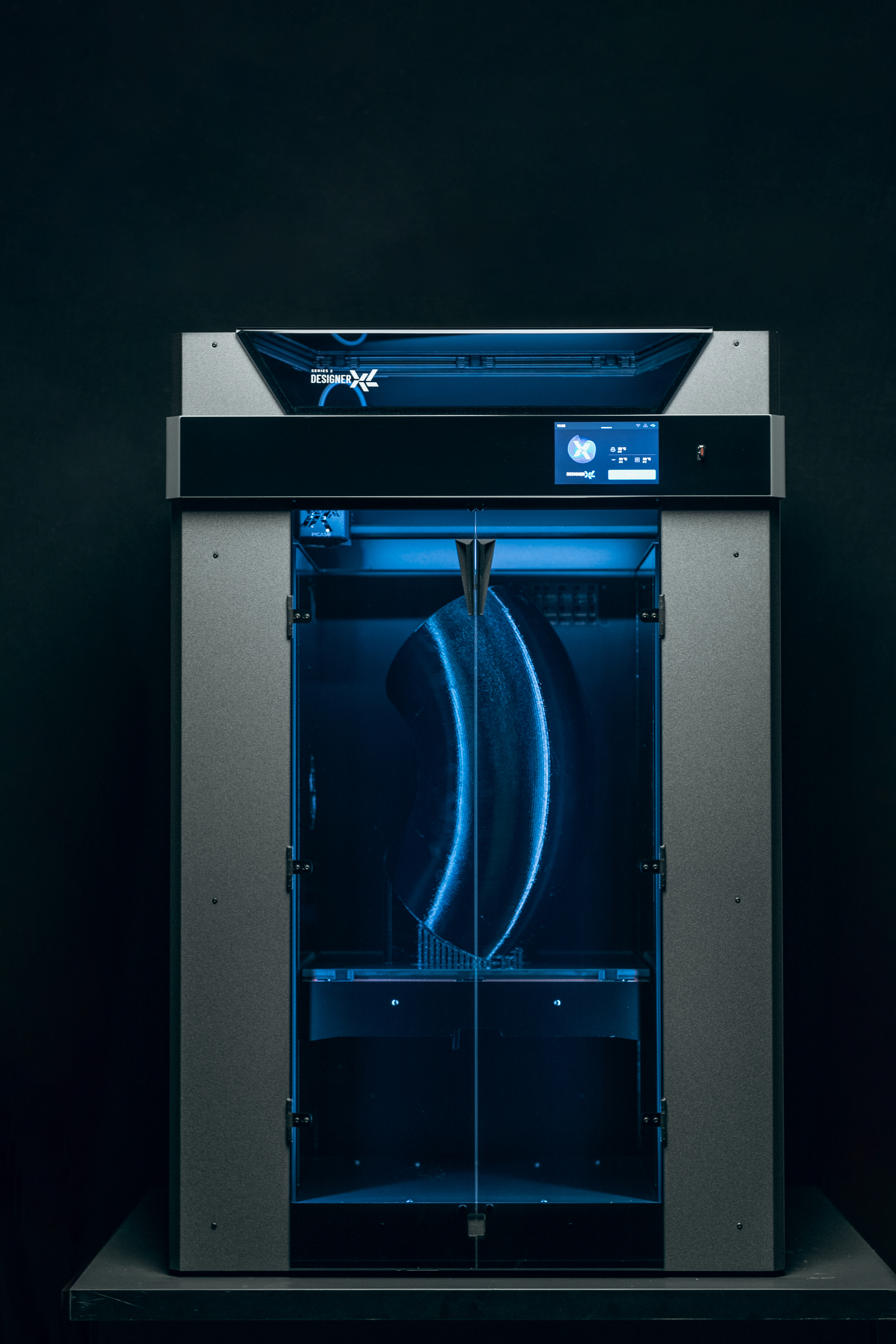Description of the "MakerBot Replicator 2" 3D printer
The personal 3D printer MakerBot Replicator 2 has a high level of print resolution at 100 microns, which puts it on par with expensive professional 3D printers. The device can create 3D models with dimensions of 285x153x155 mm at a high printing speed: 50 mm/s without compromising the quality of the printed objects. The printer is equipped with a heated platform that prevents plastic slippage and layer deformation.About the "MakerBot Replicator 2" printer
The sturdy steel casing guarantees high wear resistance.
MakerBot devices can be boldly called the standard of desktop 3D printers. The main model of the company has undergone many changes, constantly undergoing modernization of both functional features and appearance. The MakerBot Replicator 2 should not be considered a household printer, as it is not. This device is intended for advanced users or, at the very least, for those who are ready to understand the intricacies of the 3D printing process and to receive quality printing and extensive functional capabilities in return.
Design
MakerBot Replicator 2 3D printerThe external design of the Replicator 2 printers can hardly be called classic. It is more correct to call it "original," because it is the "replicators" (including their various forerunners, the MakerBot Thing-O-Matic and MakerBot Cupcake printers) that made the open case with cut-outs in the facing panels a kind of standard, giving rise to countless imitations and outright clones. The cutouts serve a strictly practical purpose, providing easy access to the working platform from all sides and, no less importantly, ensuring good ventilation and rapid cooling when printing PLA plastic.
The load-bearing structure of the printer is made of steel with a powder coating, and the facing panels are made of polyvinyl chloride. The guides are made of aluminum, and the bearings are made of metal-ceramics based on bronze with oil impregnation. All in all, the developers made a lot of effort to ensure the durability of the device. However, not everyone is pleased with the metal frame, as the wood used in the earlier printer models is more effective at absorbing vibrations.
Unlike some earlier versions, the Replicator 2 uses only one extruder, but the size of the working area has been significantly increased to 285x153x155mm. It should be noted that there may be some confusion: the newest model, already the fifth generation, has again been named Replicator. This device can be considered a further development of the described model Replicator 2, which, according to the new nomenclature, should be classified as the fourth generation. At the moment, fourth and fifth-generation models are sold in parallel, with certain differences in configuration in the building areas, electronic equipment, and some other aspects.
An acrylic work table is perfect for printing polylactic acidSince traditionally "replicators" were designed primarily for printing polylactic acid (PLA plastic), the Replicator 2 is not equipped with a heated platform. Strictly speaking, polylactic acid is the only type of consumable material officially supported by this device. Incidentally, there is a printer variant called Replicator 2X ("X" stands for "experimental"), in which MakerBot company again experimented with printing ABS plastic, incorporating a heated platform into the design, detachable panels covering the openings in the facing panels, and reintroducing dual extruder printing. This variant is also freely available but is designed for professional-level users. The removable table of the Replicator 2 is made of acrylic, serving as an excellent base for PLA plastic models.
Printing
The extruder of the Replicator 2 3D printerPrinting is done using a single extruder and a 0.4mm diameter nozzle. With a minimum layer thickness of 100μm and positioning accuracy of 11μm along the X and Y axes and 2.5μm along the Z axis, very high-quality models are obtained, which places the Replicator 2 in the category of semi-professional printers. As already mentioned, the removable work table is made of acrylic. This option has turned out to be so successful that most users do not even resort to additional means of securing the model in place, such as adhesive tape. On the contrary, adding tape can reduce PLA adhesion compared to printing on an uncovered table. You just need to make sure before printing that the platform is clean and degreased.
The choice of colors of the company's proprietary plastic thread is quite rich, including 26 variants, 7 of which are semi-transparent. In addition, the Replicator 2 uses standard coils and a familiar 1.75mm thread diameter, which allows the use of "non-native" materials, although at your own risk.
Inexpensive options from the same Chinese manufacturers often suffer from quite low quality. There are cases when the thread has an oval cross-section, which, combined with a frankly weak pulling mechanism, can lead to a loss of adhesion and clogging of the extruder. It is especially unpleasant when the shape of the thread is unstable—printing can start normally but end with a failure in the middle of the process, with an unfinished model. It is also worth paying attention to the packaging: coils sold without vacuum packaging inevitably gather dust, the accumulation of which in the extruder, again, does not promise anything good.
The Replicator 2 is successfully used for printing wood and sandstone replicasIn addition to the potential for savings, using standard coils provides the ability to print materials that were not initially intended by the printer's designers. Thus, the Replicator 2 can print polymer imitations of wood and sandstone, known as LAYWOO-D3 and Laybrick, from the German manufacturer Orbi-Tech, very successfully. However, to print with these materials, some changes to the printer settings are recommended. For example, LAYWOO-D3 printing is desirable at a nozzle temperature of about 215-210°C (the standard temperature for printing PLA is 230°C) and with the fan off, usually used to cool freshly applied PLA layers. In the case of Laybrick, extrusion temperature is recommended to be 165-190°C to obtain smooth surfaces and 210°C along with a working fan to obtain a rough external layer.
Printing with ABS plastic is theoretically impractical due to the absence of a heated platform, but there is evidence of successful printing of small models. The greatest difficulty is preventing ABS plastic from slipping, but the ingenuity of 3D craftsmen has suggested a solution with a glass replacement of the working table and the use of hair spray as an adhesive. However, printing large models is doomed to twisting of the applied layers and deformation of the model due to shrinkage.
Good results can be achieved with nylon printing, although the lack of a heated platform significantly complicates the process. The use of specially developed variants is recommended, such as Taulman 618 and 645.
Overall, the Replicator 2 allows you to unleash your imagination and experiment with many materials beyond standard PLA plastic.
Software
The Replicator 2 software caused quite a scandal. The company used closed-source software. The proprietary software was called MakerWare. In fact, the "closeness" affected the design of the entire printer, marking the first time since the founding of the company that built its business on using designs and developments in open access. The most outraged was the legendary founder of the open-source 3D printer project, RepRap, Josef Prusa, who accused MakerBot of commercially using his ideas. Traditionally, "RepRap" developments are intended for use by enthusiasts, and if for commercial use, then with the concurrent provision of modifications in open access. But to some extent, MakerBot can be understood: the newest models underwent such significant changes that their independent production is unlikely. Adding the company's proprietary software only became the finishing touch in "closing" the design features.
MakerWare - proprietary software for the MakerBot Replicator 2In terms of functionality, the MakerWare program is almost as good as the previously used open-source programs Skeinforge and Repetier-Host, only the interface has changed. The program is compatible with Windows 7 and 8, Mac OS X, and Linux and is capable of working with STL, OBJ, and THING files.
What is alarming is the impossibility of full control of the printer using a computer connection. The Replicator 2 is equipped with a very convenient control module with an LCD display that exclusively performs operations such as platform calibration or plastic loading. If the module breaks down, the user can use the remaining plastic on the reel, but then you will need to submit the printer for repair. One computer will not be enough. On the other hand, as long as the module is working, you can use the SD card reader for printing in standalone mode, without fear of print failures due to computer freezes or cable breaks from a pet bite.
Conclusion
Replicator 2 with a heated platform from BC Technological SolutionsOne of the most successful and popular 3D printer models on the market. The model has undergone many changes aimed at optimizing work and increasing durability, and at the same time received a stylish and strict external design befitting a high-tech gadget. Perhaps the only serious drawback of the printer can be considered the relatively high cost compared to competitors or previous models. As for the theoretical inability to print ABS plastic, we will not hold this against a device that performs its tasks well. For those keen to print ABS plastic and interested in MakerBot's products, we recommend taking a look at the specially modified Replicator 2X, or purchasing a platform upgrade from a third-party company—such as BC Technological Solutions.
Advantages
- Stylish design
- High print quality
- Convenient control module
- Flexible software
- Capability to print from an SD card
Disadvantages
- Relatively high cost
| Purpose | Personal |
| Country | USA |
| Manufacturer | MakerBot Industries, LLC |
| Technical Characteristics | |
| Printing Technology | Modeling by deposition (FDM/FFF) |
| Number of printing heads | 1 |
| Build Volume, mm | 285x153x155 |
| Platform | Non-heated |
| Interfaces | USB, card reader |
| Display | Yes |
| Consumables | |
| Material Types | Plastic |
| Materials | PLA plastic |
| Filament Diameter, mm | 1.75 |
| Software | |
| Software | MakerBot MakerWare™ Bundle 1.0 |
| Dimensions | |
| Dimensions, mm | 490x420x380 |
| Weight, kg | 11.5 |
Printer Pricing
"MakerBot Replicator 2" price listing
-
Amazon 10% Off
Buy "MakerBot Replicator 2" printer on Amazone
$320 -
eBay used brand new
Buy "MakerBot Replicator 2" printer on eBay
$???





There can be your clear opinion about MakerBot Replicator 2